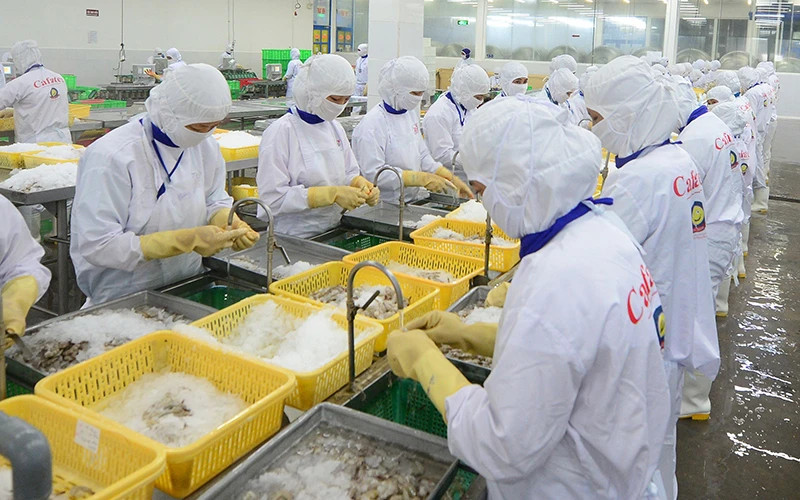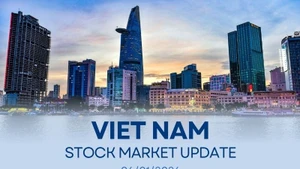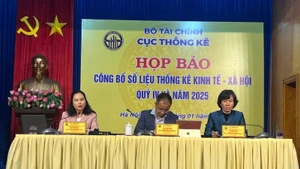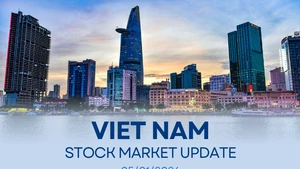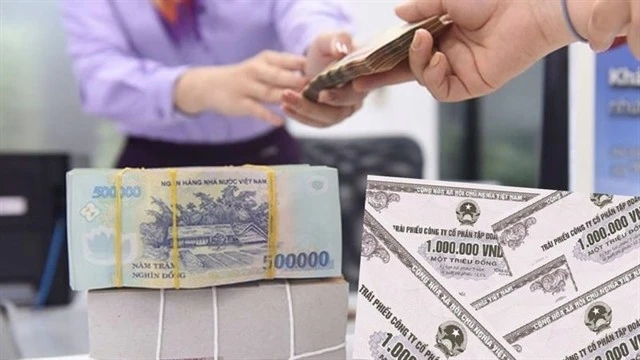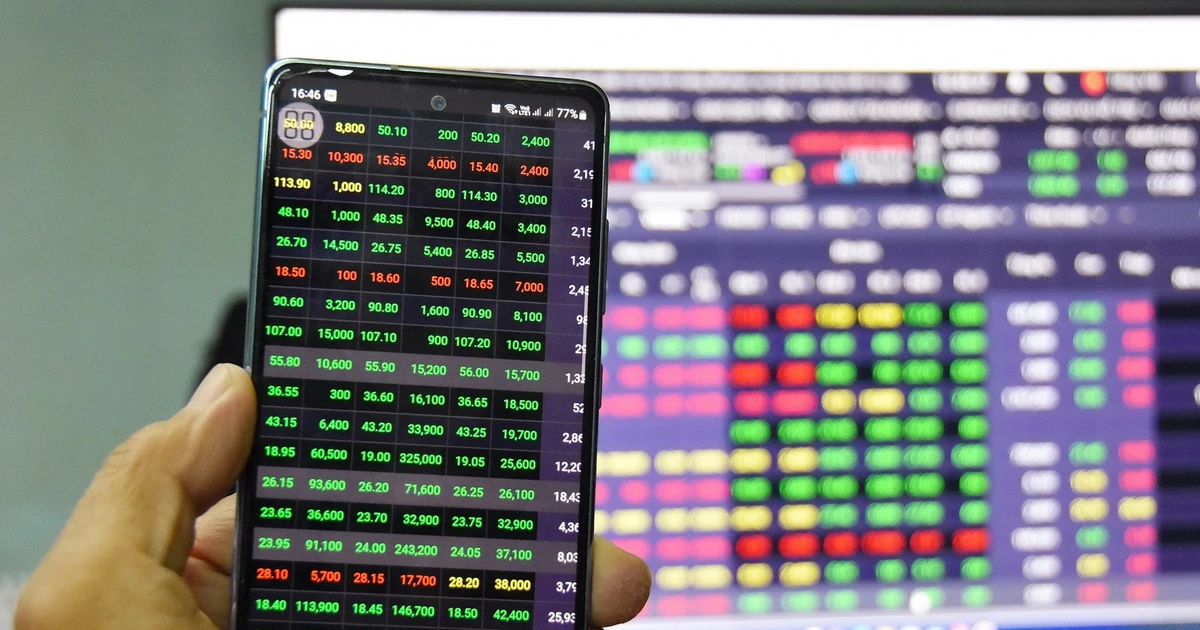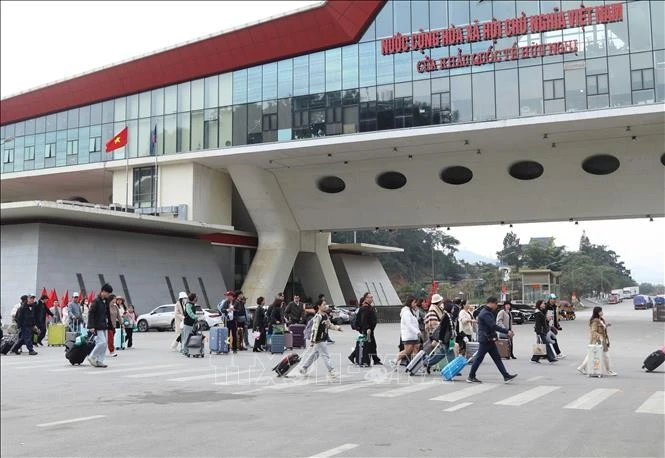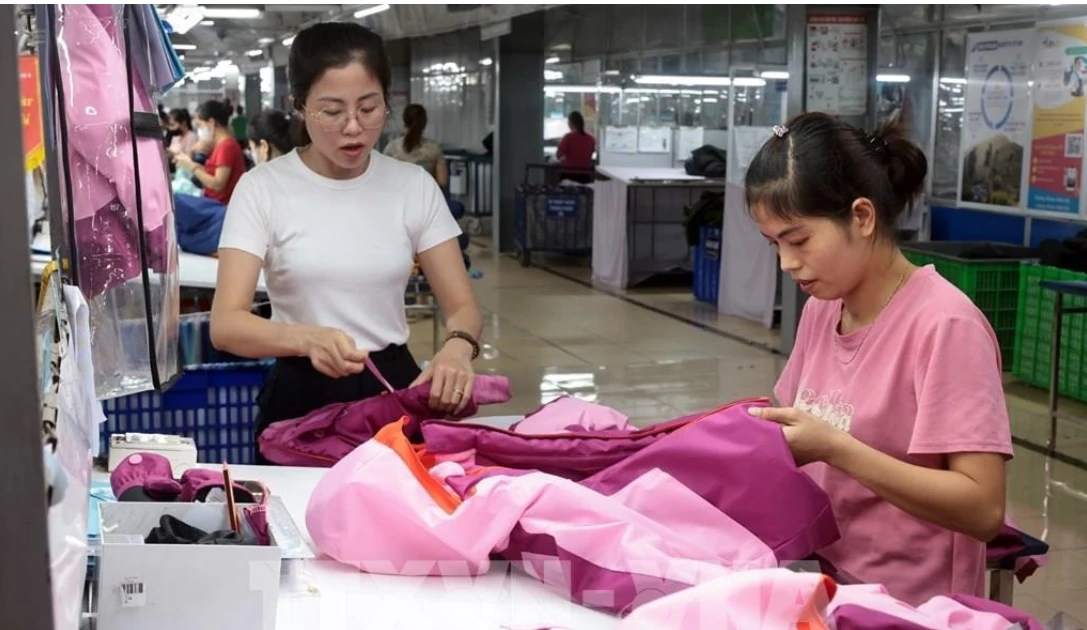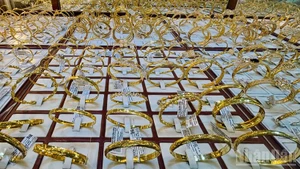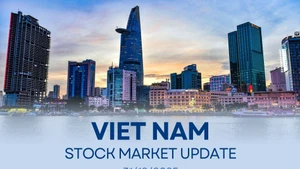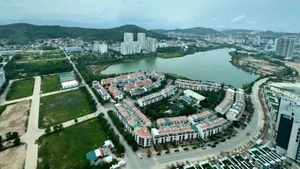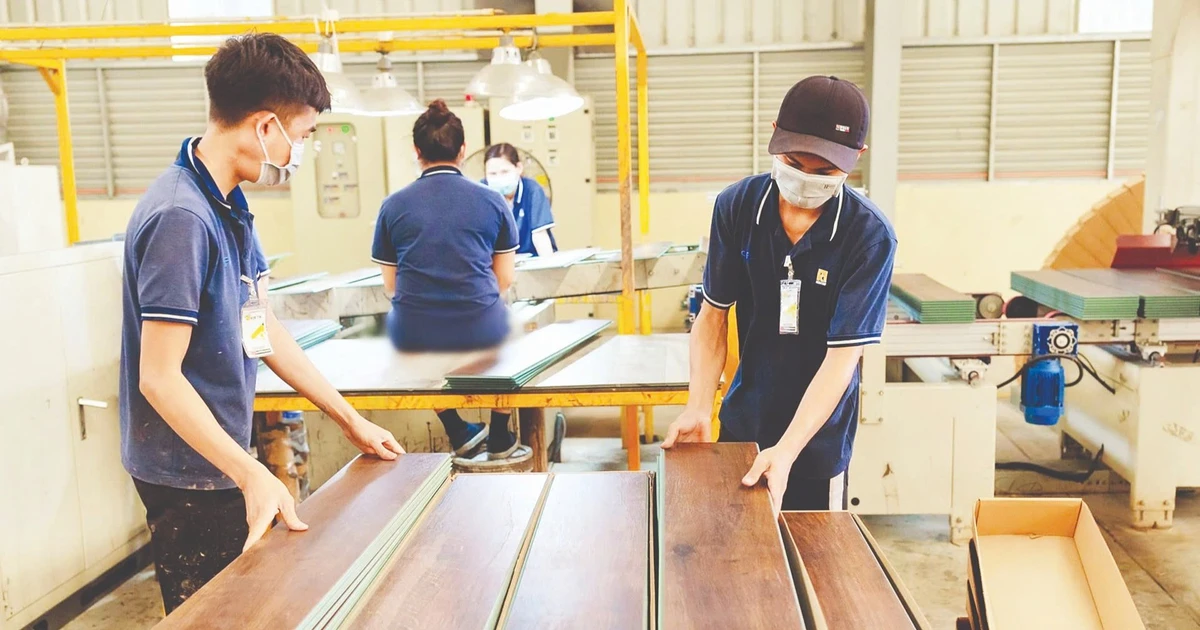In the context of increasingly narrowing agricultural land area combined with major challenges from climate change, natural disasters, epidemics, the transformation of agriculture towards circularity combined with the application of science and technology is an inevitable direction.
Increasing economic benefits
The Modern, Low-Emission Circular Agricultural Production project implemented in Phu Thanh A Commune, Tam Nong District, Dong Thap Province, has gone through four rice production seasons. In addition to rice cultivation, farmers are also implementing a model combining fish storage during the flood season with straw management in a circular manner.
According to Director of Quyet Tien Cooperative Nguyen Minh Tuan, after two years of implementation, the model of circular, modern and low-emission agriculture has been responded to and replicated by many farmers.
In 2023, only eight households participated with an area of 20 hectares, but now the area has been expanded to 80 hectares with the participation of 23 households. The new rice cultivation model helps reduce the volume of seeds and fertilisers. After harvest, about 87% of the straw is collected from the field, while the rest is sprayed with Trichoderma fungus to decompose the straw and create more nutrients for the soil.
Tran Thanh Nam, Chairman of Tam Nong District People's Committee, said: In 2023, the district implemented a circular rice production model with an area of more than 60 hectares, combined with fish farming during the flood season. The total profit from two rice crops and one fish crop is more than 55 million VND each hectare per year. In addition, the cooperative organizes tourism to experience the flood season, with a revenue of more than 70 million VND per year. This year, the district increased the rice area according to the new model to more than 160 hectares.
According to the Vietnam Association of Seafood Exporters and Producers (VASEP), in many localities of Bac Lieu Province, the application of the closed-loop shrimp farming model has been implemented and brought positive results in recent times, both helping to reduce costs and prevent the discharge of waste into canals and pollution of the environment.
Specifically, the Vinh Chau Artemia Cooperative (Vinh Trach Dong Commune, Bac Lieu City) is applying a closed-loop farming model using biotechnology to produce clean shrimp. Truc Anh Biotechnology Company Limited (Vinh Trach Commune, Bac Lieu City) with a new farming model in the direction of water circulation, using almost no outside water to limit diseases, does not have to use antibiotics for shrimp, thus helping to reduce costs and increase the quality and competitiveness of products.
Meanwhile, Dong Thap AQUA Agricultural Products Company Limited is implementing the aquaponics model. Water from the fish tank through the nitrification process will convert waste in the fish tank into nutrients for plants to use. Then, the water is purified by the substrate and plants and returned to the fish tank. Aquaponics is a closed, circular model that takes advantage of the benefits of vegetables and fish in a symbiotic mechanism.
Director Nguyen Tien Thanh said: The aquaponics farm has an area of over 13,000 m2 but only needs 16 employees to operate the entire system. The success of the model is to control the production process and produce better quality products, while reducing production costs by 40%.
Investing in technology, innovating thinking
According to the Department of Science, Technology and Environment, under the Ministry of Agriculture and Rural Development, in order to accelerate the development of circular economy in agriculture, in the coming time, the ministry will deploy key solutions, such as: building and updating the database system, information on applications, information technology solutions, digital technology associated with the circular economic model; prioritising investment in research and development, creating closed technologies and processes according to the value chain; and focusing on researching technologies directly related to the development of circular economy such as crop spreading, processing, and utilising agricultural by-products.
In addition, the ministry will also build an agricultural promotion program to transfer technology to develop circular agriculture, including technology to recycle and reuse by-products and waste from production and processing in the fields of cultivation, livestock, aquaculture, forestry and food. In addition, it will promote bilateral and multilateral cooperation with countries in the region and around the world with developed circular economies to learn from experience, attract investment, as well as receive new generation technology transfer.
However, according to Tran Cong Thang, Director of the Institute of Policy and Strategy for Agricultural and Rural Development, although the policy framework on developing circular economic models in Vietnam has been formed, the actual implementation still has many limitations.
In particular, the biggest limitation is that the awareness of farmers, cooperatives, businesses, and consumers about the necessity of converting to developing circular economic models is still inadequate, leading to circular economic models in Vietnam not being popular, thus only being applied in some fields and by some businesses.
Notably, the application in small businesses and production households is still limited.
Therefore, in the coming time, the authorities need to further implement programmes to raise awareness and responsibility of people and businesses on circular economic development; build an agricultural extension column on circular economic development in agriculture; and organise forums, conferences, seminars, and build electronic information pages on circular economic development in agriculture so that people and businesses can easily access and implement new methods.
